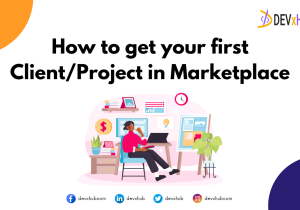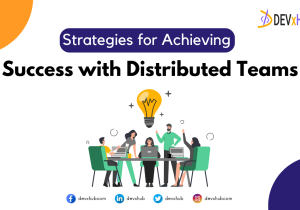Blog - MVP Development: A Strategic Approach to Startup Success
Introduction
For any startup, getting a product to market quickly and cost-effectively is critical. Building an elaborate product with every possible feature can drain time and resources. A better approach is to release a minimum viable product (MVP). This allows startups to gather real user feedback from the start, iterate rapidly, and increase chances of success.
An MVP has just enough core features to be usable by early adopters. It provides value and solves a problem, while requiring minimal development time. Startups leverage MVPs to validate product ideas before major investment. This blog post covers everything you need to know about MVPs to boost the success of your startup.
What is an MVP?
A minimal viable product, or MVP, is a tactical method that startups and business owners employ to introduce new goods and services. In order to get input from actual consumers, it entails releasing an early, basic version of a product that has only enough essential features to be functional. MVPs provide faster and more affordable validation of core assumptions than developing a large product up front.
Using the MVP model, entrepreneurs may go public and capture the hearts of their audience. This is the procedure for reducing costs and luring capital into the company.
According to the data, up to 90% of companies fail during the first year of operation. Of them, around 10% left during their first year, and 70% failed between their second and fifth years.
A product’s MVP is the version with extra features added to test the market. An MVP might be introduced via a website, a unique application, a program, or any physical place.
An MVP is more than just a basic product. It’s a product with enough essential features to showcase the idea to investors and early adopters. This is important in Agile development because it lets businesses get input from customers early on, which helps in making future decisions and changes.
MVPs aid product success in several ways, including:
- Verifying market demand
- Validating the product’s concept
- Releasing the product as quickly as possible
- Saving money on full product development
- Gaining investor confidence
MVPs can be applied to any kind of product. Whether you’re creating a website or focusing on MVP app development, it’s a reliable approach every time.
The Strategic Importance of MVP in Product Development
A common reason for startup failure is producing goods that don’t satisfy consumer demand. According to a CB Insights survey, a lack of problem-solution fit is the reason behind 42% of startup failures.
By first understanding the needs of the consumer, MVP development services can help organizations avoid this issue before committing to a large project. MVPs verify the concept and prevent the company from wasting money on a product that isn’t needed.
Obtaining early-stage investment for firms is a crucial step in assessing their potential. A successful MVP is typically required for startups to obtain Series A funding in order to demonstrate their potential. As a result, MVP is a criterion that investors and clients use to assess the chance of project success.
MVP Benefits for Startups
Developing an MVP provides several key advantages for startups:
- Test your underlying assumptions: Testing your assumptions is the MVP’s most important advantage. Does the product address a legitimate problem? Do users want or need the essential features? MVPs allow you to test these theories without having to finish constructing the entire product. This saves time and effort on concepts that users don’t find appealing.
- Early user feedback: An MVP allows you to test your product with actual consumers very early on. This enables you to get input and improve the product prior to starting full development. User perceptions are very valuable.
- Cost-effective: Compared to full-featured products, MVPs demand a substantially less initial expenditure. By doing this, unnecessary work on features users might not desire is avoided. The capacity to fail quickly and iterate is essential.
- Fast time to market: An MVP can be developed and released rapidly in place of taking months or years to create the ideal product. This enables you to enter the market ahead of rivals and establish yourself more quickly.
- Concentrate on core features: You can concentrate on perfecting the core product experience by eliminating elements that aren’t absolutely necessary. Instead of “featuritis,” this produces things that consumers adore.
In summary, MVPs help startups succeed by enabling assumption testing, early user feedback, cost-effective development, rapid market entry, and emphasis on the core product value.
How to Build a Successful MVP
Follow these key steps to build an effective MVP:
- Determine the main presumptions – Clearly state the main presumptions you have about your market, clients, and product. Sort assumptions into priority tests for the MVP
- Identify the MVP kind – Choose the most effective MVP strategy to verify your hypotheses. Typical choices include video demos, digital MVPs, concierge services, landing pages, etc.
- Describe the minimum feature set – Describe the minimum feature set required to create an MVP that fulfills essential functions. Eliminate any unnecessary features. Adhere to the bare minimum.
- Specify key metrics – Determine the key metrics to measure with the MVP. Examples: conversions, churn rate, engagement, retention, virality etc.
- Develop MVP quickly – Build the MVP as quickly as possible, using agile development principles. Streamline the design and scope. The goal is to launch fast.
- Release and gather feedback – Release the MVP to a small set of users. Gather feedback through surveys, interviews, behavior analysis, NPS scores etc.
- Improve based on data – Analyze feedback and usage data. Determine necessary changes. Avoid guessing; make data-driven decisions.
- Repeat process – Iteratively refine and re-test with new MVP versions until product-market fit is achieved. Continuously optimize and evolve.
Building an Effective MVP: Key Components and Considerations
To build a successful MVP, it’s important to consider the following key components:
- Alignment with business objectives: The MVP should serve a specific purpose in line with your company’s overall strategy.
- User persona understanding: Know your audience and what they want, like, and struggle with. This will guide the development of the MVP.
- Actionable development plan: Have a clear plan for developing the MVP, including the features that will be included and the timeline for completion.
Beyond MVP: Scaling and Expanding Your Product
Once your MVP is doing well and people like it, it’s important to plan what comes next. Scaling means more than just adding features. It’s about understanding your users, making your technology work better, and taking advantage of opportunities in the market.
Listening to what users say is important. It helps you keep improving your product in small steps and keeps it focused on what users want. Doing good marketing, finding ways to make money, and using resources wisely are all very important at this stage. Also, making smart partnerships and keeping up with what’s happening in your industry can open up new possibilities for growth. Remember, going beyond the MVP isn’t just about making your product bigger, it’s also about making your vision and the value you offer bigger and better.
Conclusion
We believe that MVP development services are not an option but a necessity for startups. Gathering feedback from customers is much more effective than having countless rounds of inter-team product development discussions. This agile approach provides a sustainable, smart, and effective solution for development and can be utilized by self-funded startups and growing businesses.
Using the MVP method helps startups distinguish between their successful and unsuccessful projects. MVPs enable incrementally confirming assumptions and concepts through actual user feedback, as opposed to obsessively constructing a “perfect” solution in one large go.
This improves the likelihood of product-market fit and speeds up learning. Ignore the large feature lists, lengthy development cycles, and elaborate plans. To test the core, build the bare minimum. Start quickly and refine. Start with a fantastic user experience. Optimize using concrete facts rather than conjecture.
The three pillars of an MVP mindset are agility, attention, and speed. It promotes user-driven, ongoing improvement. In contrast, typical waterfall development is characterized by its slowness, rigidity, and reliance on internal presumptions. Many of the most successful firms in the world have grown thanks to the MVP strategy.
Related Posts
Categories
- App Development (2)
- Design (2)
- DEVxHUB (30)
- Digital Marketing (2)
- Guide (24)
- It Bangladesh (1)
- Logo design (1)
- Operating system (1)
- Personal Improvement (14)
- Planning (4)
- Project management (3)
- Social media (2)
- Software Development (5)
- Software Quality Assurance (8)
- Startups (1)
- Team work (1)
- UI UX (1)
- Web Development (6)
Main Tags
- 2024
- Android
- app development
- bangladesh
- content writing
- design
- devxhub
- Digital marketing
- Guide
- IOS
- It
- logo design
- Operating system
- Personal Improvement
- planning
- project management
- social media
- Software Development
- Software Quality Assurance
- software testing
- software testing types
- Startups
- Success
- team
- UI UX
- UI UX design
- VR
- Web Development















